-
 Bitcoin
Bitcoin $83,255.2836
-2.28% -
 Ethereum
Ethereum $1,821.6270
-4.98% -
 Tether USDt
Tether USDt $0.9997
-0.02% -
 XRP
XRP $2.0300
-5.62% -
 BNB
BNB $592.2419
-3.00% -
 Solana
Solana $121.1432
-4.53% -
 USDC
USDC $0.9998
-0.01% -
 Dogecoin
Dogecoin $0.1649
-5.26% -
 Cardano
Cardano $0.6493
-4.64% -
 TRON
TRON $0.2344
-0.97% -
 Toncoin
Toncoin $3.9186
-3.26% -
 UNUS SED LEO
UNUS SED LEO $9.3843
1.32% -
 Chainlink
Chainlink $13.0875
-7.63% -
 Stellar
Stellar $0.2581
-5.40% -
 Avalanche
Avalanche $18.3472
-6.91% -
 Sui
Sui $2.2957
-5.79% -
 Shiba Inu
Shiba Inu $0.0...01215
-4.50% -
 Hedera
Hedera $0.1623
-5.09% -
 Litecoin
Litecoin $82.9416
-2.41% -
 Polkadot
Polkadot $4.0027
-4.37% -
 MANTRA
MANTRA $6.1965
-1.88% -
 Bitcoin Cash
Bitcoin Cash $296.1636
-4.49% -
 Bitget Token
Bitget Token $4.5300
-2.20% -
 Dai
Dai $0.9998
-0.04% -
 Ethena USDe
Ethena USDe $0.9998
-0.02% -
 Pi
Pi $0.6552
-7.64% -
 Hyperliquid
Hyperliquid $12.3484
-7.49% -
 Monero
Monero $216.8009
-0.80% -
 Uniswap
Uniswap $5.9283
-6.22% -
 Aptos
Aptos $5.1281
-5.57%
What does opening and closing positions mean in Bitcoin contract trading?
Bitcoin contract trading involves opening long (bullish) or short (bearish) positions using leverage, requiring margin to avoid liquidation. Closing positions utilizes market or limit orders, ideally with stop-loss and take-profit orders for risk management.
Feb 28, 2025 at 05:43 pm
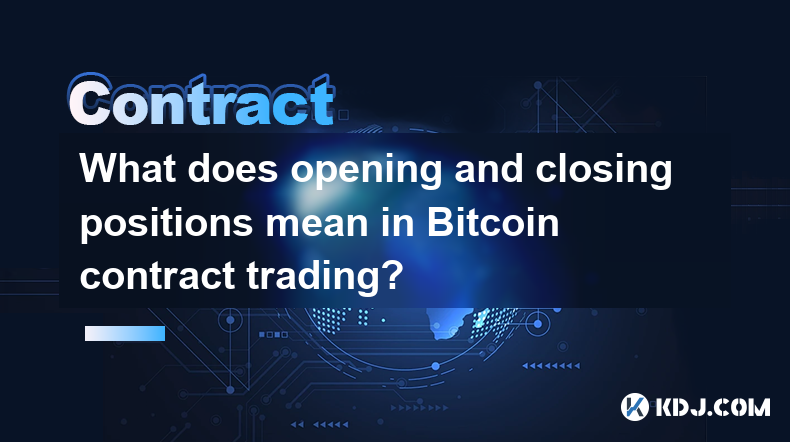
What Does Opening and Closing Positions Mean in Bitcoin Contract Trading?
Key Points:
- Opening a Position: This involves initiating a trade, specifying whether you're going long (betting on price increase) or short (betting on price decrease), and defining the contract size and leverage. Understanding margin requirements and liquidation risks is crucial.
- Closing a Position: This involves exiting a trade, either to realize profits or limit losses. Methods include market orders (immediate execution at current market price) and limit orders (execution at a specified price). Proper risk management strategies are vital for successful closing.
- Long Positions: A detailed explanation of strategies, risks, and considerations for adopting a long position in Bitcoin contract trading.
- Short Positions: A detailed explanation of strategies, risks, and considerations for adopting a short position in Bitcoin contract trading.
- Leverage and Margin: A comprehensive explanation of how leverage amplifies both profits and losses, along with the critical role of margin in maintaining open positions. Understanding liquidation is essential.
- Order Types: An exploration of different order types, including market orders, limit orders, stop-loss orders, and take-profit orders, and their respective applications in opening and closing positions.
- Opening a Position in Bitcoin Contract Trading:
Opening a position in Bitcoin contract trading involves initiating a trade where you speculate on the future price movement of Bitcoin. Unlike spot trading where you buy and own the underlying asset, contract trading utilizes leverage to magnify potential profits (and losses). Before opening a position, you must first choose a reputable cryptocurrency exchange that offers Bitcoin contract trading. These exchanges typically require account registration and verification. Once your account is set up, you can navigate to the Bitcoin contract trading section of the platform.
The crucial decision is whether to go long or short. A long position is a bullish bet, predicting the price of Bitcoin will rise. You're essentially borrowing Bitcoin to sell at a lower price and buying it back later at a higher price to return it, pocketing the difference. A short position is a bearish bet, predicting the price will fall. You borrow Bitcoin from the exchange, sell it at the current market price, and then buy it back later at a lower price to return it, profiting from the price decline. The exchange facilitates this borrowing and lending mechanism.
Next, you must define the contract size, representing the quantity of Bitcoin you're trading. This is often expressed in Bitcoin (e.g., 1 BTC, 0.1 BTC). The contract size, in conjunction with the leverage, determines your potential profit or loss. Leverage allows you to control a larger position than your initial capital would normally allow. For example, 10x leverage means you can control 10 times the value of your invested funds. However, leverage significantly amplifies both profits and losses; a small price movement against your position can quickly lead to substantial losses. Understanding and managing risk is paramount when using leverage.
Finally, you need to consider margin. Margin is the amount of collateral you deposit to secure your leveraged position. The exchange requires sufficient margin to cover potential losses. If the price moves against your position and your margin falls below a certain threshold (the maintenance margin), the exchange may issue a margin call, requiring you to deposit more funds. If you fail to meet the margin call, your position may be liquidated, meaning the exchange automatically closes your position to minimize its losses. Liquidation can result in significant losses, even exceeding your initial investment. Therefore, careful consideration of leverage and margin is critical before opening any position.
- Closing a Position in Bitcoin Contract Trading:
Closing a position means exiting your trade, either to secure profits or limit losses. The process involves reversing your initial trade. If you're long, you sell your contract; if you're short, you buy back the contract. There are two primary methods for closing a position: market orders and limit orders.
A market order executes immediately at the current market price. This is the simplest method, ensuring your position is closed quickly. However, it may not always yield the most favorable price, especially during volatile market conditions. Slippage, the difference between the expected price and the actual execution price, can occur with market orders.
A limit order allows you to specify the price at which you want to close your position. This offers more control over the execution price but doesn't guarantee execution. If the market price doesn't reach your specified limit price before your position is liquidated or you manually cancel the order, your position remains open. Limit orders are particularly useful for securing profits or limiting losses at predetermined price levels.
Effective position closing requires a robust risk management strategy. Setting stop-loss orders is crucial for limiting potential losses. A stop-loss order automatically closes your position when the price reaches a specified level. This helps protect against significant losses if the market moves unexpectedly against your position. Similarly, take-profit orders automatically close your position when the price reaches a predetermined profit target. This helps to secure profits and avoid potential reversals in the market. Properly utilizing stop-loss and take-profit orders is a fundamental aspect of responsible contract trading.
- Long Positions in Bitcoin Contract Trading:
A long position in Bitcoin contract trading is a bullish strategy, anticipating an increase in Bitcoin's price. Traders open long positions by buying Bitcoin contracts, expecting to sell them later at a higher price. The potential profit is the difference between the buying and selling prices, amplified by the leverage used. Successful long positions rely on accurate market analysis, predicting upward price trends. Fundamental analysis, examining factors such as adoption rate, regulatory changes, and technological advancements, can inform long-term predictions. Technical analysis, utilizing charts and indicators to identify patterns and trends, can provide short-term trading signals.
However, long positions carry inherent risks. Unforeseen market events, like negative news or regulatory changes, can cause sharp price drops, leading to substantial losses, especially with high leverage. Market corrections, where prices temporarily decline before resuming an upward trend, can also trigger stop-loss orders or even liquidation if not managed properly. Furthermore, prolonged periods of sideways or downward price movement can erode profits and lead to holding losing positions for extended durations. Effective risk management, including appropriate leverage levels and stop-loss orders, is crucial for mitigating these risks. Diversification across different assets can also reduce the impact of losses from a single position.
- Short Positions in Bitcoin Contract Trading:
A short position in Bitcoin contract trading is a bearish strategy, anticipating a decrease in Bitcoin's price. Traders open short positions by borrowing Bitcoin contracts and immediately selling them, hoping to buy them back later at a lower price. The profit is the difference between the initial selling price and the repurchase price, again amplified by leverage. Short positions require careful analysis of market conditions, anticipating downward price trends. Technical analysis can help identify bearish patterns and indicators, while fundamental analysis can assess potential catalysts for price declines, such as negative news or market sentiment shifts.
Short positions also involve significant risks. Unexpected positive news or strong buying pressure can rapidly increase Bitcoin's price, leading to substantial losses. A "short squeeze," where short sellers are forced to cover their positions, can cause a dramatic price spike, potentially resulting in liquidation. Moreover, prolonged periods of sideways or upward price movement can deplete capital and necessitate holding losing positions for extended periods. Therefore, effective risk management is crucial when employing short positions. This includes using appropriate leverage, setting stop-loss orders to limit potential losses, and regularly monitoring market conditions to adapt trading strategies as needed.
- Leverage and Margin in Bitcoin Contract Trading:
Leverage in Bitcoin contract trading magnifies both profits and losses. It allows traders to control a larger position with a smaller amount of capital. For example, 10x leverage means a trader can control 10 times the value of their invested funds. While leverage can significantly amplify profits, it also increases the risk of substantial losses. A small price movement against the trader's position can quickly lead to margin calls and liquidation.
Margin is the collateral deposited to secure a leveraged position. The exchange requires sufficient margin to cover potential losses. The margin requirement varies depending on the leverage used and the volatility of the market. If the price moves against the position, the margin balance decreases. When the margin falls below a certain level (the maintenance margin), the exchange issues a margin call, requiring the trader to deposit more funds. Failure to meet the margin call results in liquidation, where the exchange automatically closes the position to minimize its losses. Liquidation can lead to significant losses, potentially exceeding the initial investment.
Understanding leverage and margin is crucial for managing risk in Bitcoin contract trading. Traders should carefully consider their risk tolerance and choose leverage levels accordingly. Using lower leverage reduces the risk of liquidation but also limits potential profits. Monitoring margin levels closely and implementing risk management strategies, such as stop-loss orders, are vital for protecting capital. The relationship between leverage and margin is directly proportional to the risk involved. Higher leverage means higher potential profit but also higher risk of liquidation.
- Order Types in Bitcoin Contract Trading:
Various order types are available in Bitcoin contract trading, each offering different levels of control and risk management. Understanding these order types is crucial for effective trading.
Market orders execute immediately at the current market price. They are simple and straightforward but may not always yield the most favorable price, especially during volatile market conditions. Slippage, the difference between the expected price and the actual execution price, is a risk with market orders.
Limit orders allow traders to specify the price at which they want to open or close a position. This offers more control over the execution price but doesn't guarantee execution. If the market price doesn't reach the specified limit price, the order remains unfilled. Limit orders are useful for securing profits or limiting losses at predetermined price levels.
Stop-loss orders automatically close a position when the price reaches a specified level. This helps protect against significant losses if the market moves unexpectedly against the trader's position. Stop-loss orders are crucial for risk management in leveraged trading.
Take-profit orders automatically close a position when the price reaches a predetermined profit target. This helps to secure profits and avoid potential reversals in the market. Combining stop-loss and take-profit orders creates a defined risk-reward profile for each trade. These orders offer a crucial level of automation in managing trades and limiting potential losses.
FAQs:
Q: What happens if my margin runs out in Bitcoin contract trading?
A: If your margin falls below the maintenance margin level set by the exchange, you'll receive a margin call, requiring you to deposit additional funds to maintain your position. Failure to meet the margin call will result in liquidation, where the exchange automatically closes your position to minimize its losses. This can lead to significant losses, potentially exceeding your initial investment.
Q: Can I use leverage in Bitcoin contract trading without risking liquidation?
A: While you can use leverage, there's always a risk of liquidation. Leverage amplifies both profits and losses. The higher the leverage, the greater the risk of liquidation if the market moves against your position. Careful risk management, including setting appropriate stop-loss orders and monitoring your margin levels closely, is crucial to minimize this risk. However, there's no way to completely eliminate the risk of liquidation when using leverage.
Q: What are the differences between long and short positions in Bitcoin contract trading?
A: A long position is a bullish bet, anticipating a price increase. You buy contracts expecting to sell them later at a higher price. A short position is a bearish bet, anticipating a price decrease. You sell contracts (borrowing them from the exchange) intending to buy them back later at a lower price. Both carry risks, but the risks are different: long positions are vulnerable to downward price movements, while short positions are vulnerable to upward movements.
Q: How do I choose the right leverage for Bitcoin contract trading?
A: The appropriate leverage level depends on your risk tolerance and trading strategy. Higher leverage amplifies potential profits but also increases the risk of liquidation. Beginners should start with lower leverage to gain experience and understand the risks before gradually increasing it. It’s crucial to never use more leverage than you can afford to lose. Consider your risk appetite and the volatility of the market when deciding on your leverage.
Q: What is the best strategy for closing positions in Bitcoin contract trading?
A: There is no single "best" strategy for closing positions. The optimal approach depends on your individual trading style, risk tolerance, and market conditions. However, a well-rounded strategy typically involves using a combination of market orders, limit orders, stop-loss orders, and take-profit orders to manage risk and secure profits. Consider factors such as market volatility and your overall trading goals when deciding how to close your positions.
Disclaimer:info@kdj.com
The information provided is not trading advice. kdj.com does not assume any responsibility for any investments made based on the information provided in this article. Cryptocurrencies are highly volatile and it is highly recommended that you invest with caution after thorough research!
If you believe that the content used on this website infringes your copyright, please contact us immediately (info@kdj.com) and we will delete it promptly.
- Bitcoin (BTC) Price Prediction: Will BTC Break Out Above $86,000 to Signal the Start of a Recovery?
- 2025-04-03 07:05:12
- Recent market activity shows a split in altcoin performance.
- 2025-04-03 07:05:12
- Publicly Traded Businesses Continuously Buying Bitcoin ($BTC) to Demonstrate Its Emerging Significance
- 2025-04-03 07:00:14
- Credefi Launches Its NFT Bonds Product on the Polytrade Marketplace
- 2025-04-03 07:00:14
- What If the Next Big Crypto Boom Isn't in Bitcoin or Ethereum—but in Meme Coins?
- 2025-04-03 06:55:13
- Despite Price Drop, Shibarium Network Processes Over 1 Billion Transactions
- 2025-04-03 06:55:13
Related knowledge

How to trade CoinEx leveraged futures?
Apr 03,2025 at 03:56am
Trading leveraged futures on CoinEx can be an exciting way to potentially amplify your profits in the cryptocurrency market. Leveraged futures allow traders to borrow funds to increase their trading position, which can lead to higher returns, but also comes with increased risk. In this article, we will guide you through the process of trading CoinEx lev...
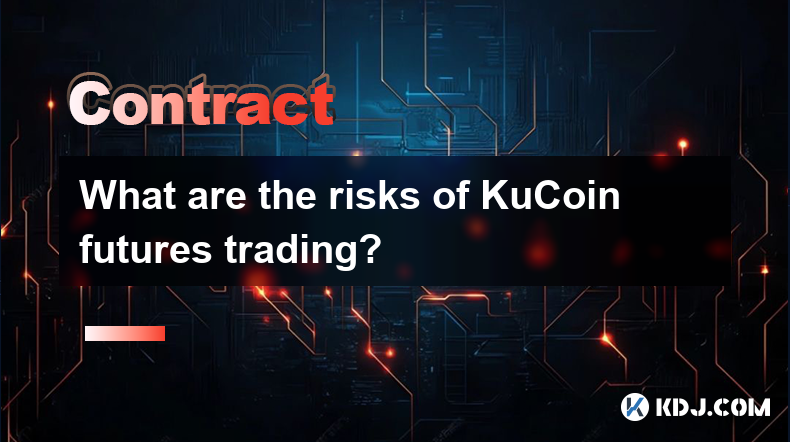
What are the risks of KuCoin futures trading?
Apr 03,2025 at 01:14am
KuCoin futures trading offers traders the opportunity to speculate on the future price of cryptocurrencies, but it comes with its own set of risks that traders need to be aware of. Understanding these risks is crucial for anyone looking to engage in futures trading on the KuCoin platform. This article will delve into the various risks associated with Ku...
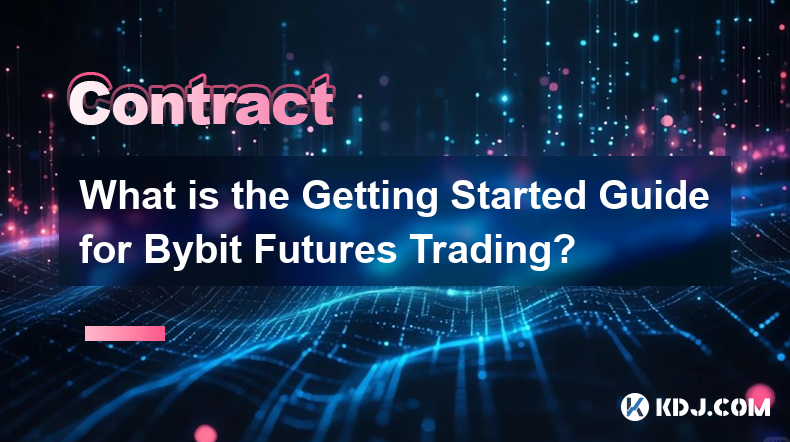
What is the Getting Started Guide for Bybit Futures Trading?
Apr 03,2025 at 12:42am
Bybit is a popular cryptocurrency exchange that offers futures trading, allowing users to speculate on the price movements of various cryptocurrencies. If you're new to Bybit futures trading, this guide will walk you through the essential steps to get started. From setting up your account to understanding the basics of futures trading, we'll cover every...
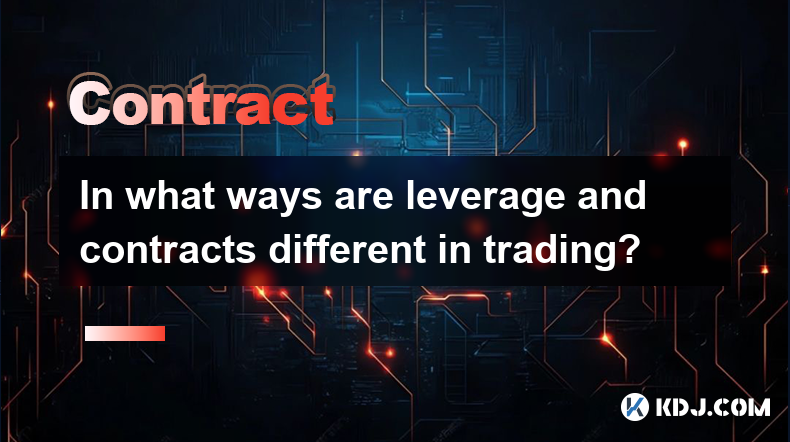
In what ways are leverage and contracts different in trading?
Apr 03,2025 at 03:42am
Leverage and contracts are two fundamental concepts in cryptocurrency trading that, while related, serve different purposes and have distinct characteristics. Understanding the differences between them is crucial for any trader looking to navigate the volatile crypto markets effectively. This article will delve into the specifics of leverage and contrac...
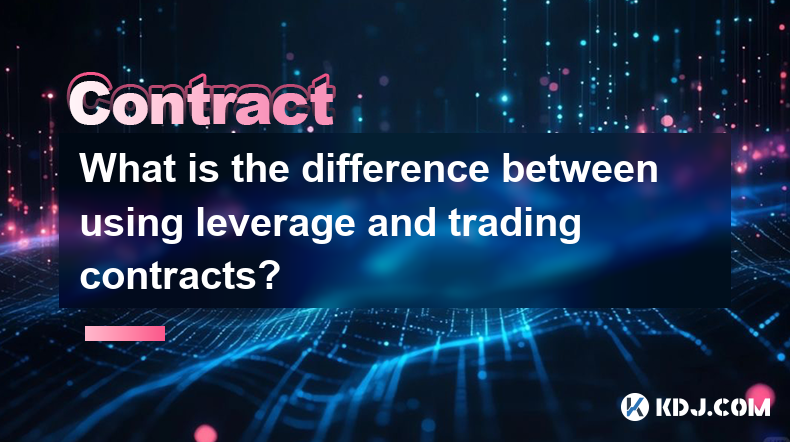
What is the difference between using leverage and trading contracts?
Apr 03,2025 at 05:21am
Leverage and trading contracts are two common terms in the cryptocurrency trading world, each with distinct features and implications. Leverage allows traders to increase their exposure to a cryptocurrency by borrowing funds from a broker. This can amplify both potential profits and losses. On the other hand, trading contracts, such as futures and optio...

how to find bitcoin contract address
Mar 22,2025 at 05:07pm
How to Find a Bitcoin Contract Address: A Deep DiveFinding a Bitcoin contract address requires understanding that Bitcoin itself doesn't inherently support smart contracts like Ethereum. The concept of a "contract address" is fundamentally tied to blockchain platforms with smart contract functionality. Therefore, searching for a Bitcoin contract address...

How to trade CoinEx leveraged futures?
Apr 03,2025 at 03:56am
Trading leveraged futures on CoinEx can be an exciting way to potentially amplify your profits in the cryptocurrency market. Leveraged futures allow traders to borrow funds to increase their trading position, which can lead to higher returns, but also comes with increased risk. In this article, we will guide you through the process of trading CoinEx lev...

What are the risks of KuCoin futures trading?
Apr 03,2025 at 01:14am
KuCoin futures trading offers traders the opportunity to speculate on the future price of cryptocurrencies, but it comes with its own set of risks that traders need to be aware of. Understanding these risks is crucial for anyone looking to engage in futures trading on the KuCoin platform. This article will delve into the various risks associated with Ku...

What is the Getting Started Guide for Bybit Futures Trading?
Apr 03,2025 at 12:42am
Bybit is a popular cryptocurrency exchange that offers futures trading, allowing users to speculate on the price movements of various cryptocurrencies. If you're new to Bybit futures trading, this guide will walk you through the essential steps to get started. From setting up your account to understanding the basics of futures trading, we'll cover every...

In what ways are leverage and contracts different in trading?
Apr 03,2025 at 03:42am
Leverage and contracts are two fundamental concepts in cryptocurrency trading that, while related, serve different purposes and have distinct characteristics. Understanding the differences between them is crucial for any trader looking to navigate the volatile crypto markets effectively. This article will delve into the specifics of leverage and contrac...

What is the difference between using leverage and trading contracts?
Apr 03,2025 at 05:21am
Leverage and trading contracts are two common terms in the cryptocurrency trading world, each with distinct features and implications. Leverage allows traders to increase their exposure to a cryptocurrency by borrowing funds from a broker. This can amplify both potential profits and losses. On the other hand, trading contracts, such as futures and optio...

how to find bitcoin contract address
Mar 22,2025 at 05:07pm
How to Find a Bitcoin Contract Address: A Deep DiveFinding a Bitcoin contract address requires understanding that Bitcoin itself doesn't inherently support smart contracts like Ethereum. The concept of a "contract address" is fundamentally tied to blockchain platforms with smart contract functionality. Therefore, searching for a Bitcoin contract address...
See all articles
























































































